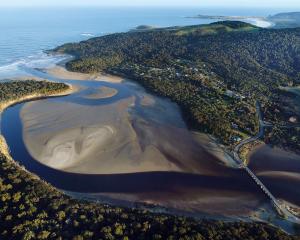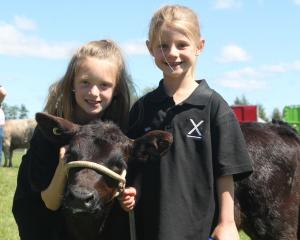Blink and you might miss it.
This reporter did just that on approaching the Yellow-Eyed Penguin Trust’s new Long Point field base, having been dispatched on a visit to explore the new facility this week.
However, tucked away at the end of a winding gravel road on the Catlins’ wild coast, trust officials would likely express quiet satisfaction their flagship conservation base is going under the radar.

Original plans for the base located it more prominently at the trunk of the headland after which it is named — Irahuka/Long Point — causing unhappy rumblings among some concerned it could impact the natural beauty of the area.
Long Point project manager Dave McFarlane said those concerns had been taken into account during final planning for the site’s construction — a process that has taken 15 years from conception to realisation.
"It was actually 2006 we started to investigate the project and, in 2009, we were lucky enough to acquire the sections of land we wanted, roughly comprising the seaward half of Long Point and land around Cosgrove Creek nearby.

"Since 2009, there’s been fencing put in place, and considerable ongoing conservation work at the site, but there’s always been a desire to have a field base nearby to allow for serious long-term projects to take place affordably and efficiently.
"Now we have that, it can only be a boon to conservation efforts for the hoiho [yellow-eyed penguin] and other coastal species in the area."

Funding accumulated gradually over the years, including through the "generous" bequests of the trust’s many supporters and, in late 2017, a $50,000 grant from the Otago Community Trust gave renewed impetus to getting bricks on the ground at the 75ha site.
Further funding from Clutha District Council and Doc’s Nature Heritage Fund helped keep the wheels turning and, on February 15, the base was formally opened.
Mr McFarlane said the trust was "delighted" with the end result, although finishing touches such as landscaping remained to be completed.
Funds raised towards the project totalled $262,000, although a final cost for the facility was yet to be determined."Any infrastructure project like this costs nowadays but, given the dire straits the hoiho finds itself in at present, we believe it’s money well spent."
A nest count this spring revealed just five yellow-eyed penguin pairs at Long Point, down from 16 last year, and a sharp decline from the 50 or more when the trust acquired the site in 2009.
Reasons for the decline are many and complex, but include food deficits, disease, predation, and harmful human interactions.
Mr McFarlane said the base — a trio of low-lying container cabins forming a protective courtyard on the leeward side — had been painted "river gum" to help it blend in with the landscape, and was built "to last".

Sitting in the sunny courtyard enjoying a cup of tea from his thermos, visitors could be forgiven for presuming such rugged durability was unnecessary.
"Days like this are pretty rare. Usually it’s a sou’westerly gale and raining, so the solid construction has that in mind with features like exterior shutters.
"It won’t be blowing away in a hurry."
The proximity of the base to the headland meant regular monitoring of penguins and other species, and essential multi-day projects such as a recent "soft release" of 15 rescued and fledged hoiho chicks were now much more feasible.
"For something like the soft release, you need to prepare fish under cover, the fledglings need to be checked regularly and ideally you need someone on hand if things go awry.

"With kitchen, toileting, shower and bunk facilities, the base makes a stay of several nights possible.
Other tangential conservation work was also welcomed.
"We have a Dunedin scientist using the base to study the impact of avian malaria on penguins. Being on the doorstep makes that practicable when funding might otherwise limit the time spent in the field, having to travel daily from Owaka 18 kilometres away, or even Dunedin."

The base meant projects like Forest & Bird’s volunteer pest control efforts could also be ramped up, and materials stored on-site, Mr McFarlane said.
Although the base had been situated discreetly away from the main Irahuka headland, it served as a statement of activity and interaction with the public.
"We’re very aware Long Point has a wide range of natural and other values appreciated by many, including tourists, walkers and surfers, for example.
"You can’t do conservation in isolation, and the base provides another way for the public to see what we’re doing, and take a stake in those activities."
The trust would use the base in educational outreach programmes such as school plantings, led by its Owaka-based Catlins ranger Sarah Irvine.

"It’s an investment that means we have a facility both fit for purpose today, and able to sustain conservation efforts well into the future."
Despite the parlous state of the hoiho at present — its decline in the Catlins has been matched at other key sites — Mr McFarlane remained hopeful a turnaround could be engineered through facilities like Long Point.
"To say the hoiho is challenged is an understatement — more intensive management is critical to save this species.
"We believe the improved ability to have conservationists and volunteers hard at hand is our best hope."













